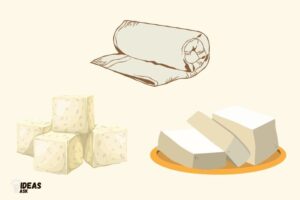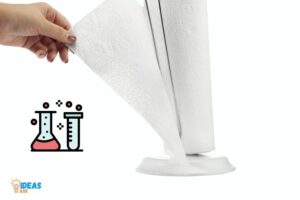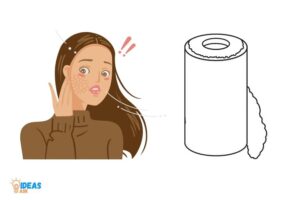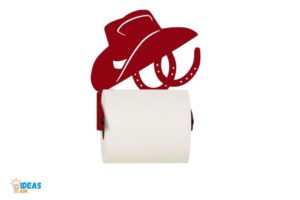How Many Microns Is a Paper Towel? 95 to 120 Microns!
A typical paper towel ranges from 95 to 120 microns thick.
The thickness of a paper towel is measured in microns. Specifically, 1 micron represents 1/1000th of a millimeter.
A standard paper towel, such as those used in kitchens and bathrooms, typically measures between 95 and 120 microns. However, the actual thickness can vary based on the brand and the manufacturing process used.
The thickness of paper towels plays a crucial role in their functionality. Thicker paper towels tend to offer more absorbency, making them a popular choice for tasks like cleaning up spills.
However, the thickness can also impact the feel of the paper towel, with thicker towels often being softer to the touch.
Micron Measurement of Different Paper Towel Brands
| Brand | Product | Micron |
|---|---|---|
| Bounty | Premier | 45 |
| Brawny | Ultra | 50 |
| VIVA | Strong | 60 |
| Sparkle | Classic | 40 |
| Scott | Pro | 55 |
| Seventh Generation | 100% Recycled | 56 |
Key Takeaway
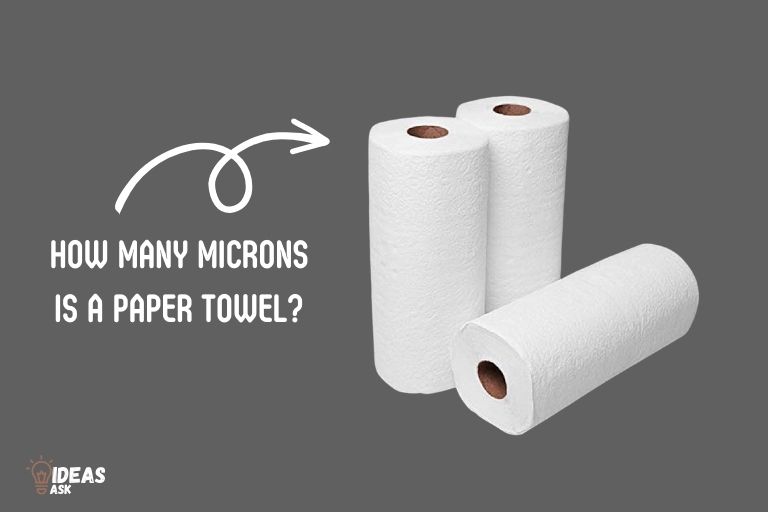
Five Facts About Microns of Paper Towels
The Science Behind Microns
Have you ever wondered how tiny a paper towel can be? Well, the answer lies in microns.
Microns are the scientific unit used to measure the smallness of an object. We will discuss what microns are, how they are measured, and how they differ from millimeters.
What Are Microns?
Micron is a term used to denote the size of an object. It is a unit of measurement that quantifies the length, width, thickness, or diameter of an object.
Microns are commonly used to measure the size of microorganisms, cells, bacteria, and viruses, as well as tiny particles and fibers like those found in paper towels.
How Are Microns Measured?
Microns can be measured using various scientific instruments like a microscope, an electron microscope, or a scanning electron microscope.
These instruments can magnify an object up to several thousand times and enable researchers to study the object’s size and structure in detail.
The Difference Between Microns And Millimeters
Microns and millimeters are both units of measurement used to measure length, width, thickness or diameter of an object. However, the main difference between microns and millimeters is their level of precision.
Microns are much smaller than millimeters and are used to measure objects that are too small to be seen with the naked eye.
Here are some key points to take away:
- Microns are scientific units of measurement used to measure small objects.
- Microns can be measured through microscopes and other scientific instruments.
- Microns are much smaller than millimeters and are used to measure extremely tiny objects.
Now that you understand the basics behind microns, you can appreciate the science behind paper towels and their small fibers that make them so absorbent.
So next time you grab a paper towel, remember the science behind their size and how they work to clean up all kinds of messes.
Paper Towel Thickness And Microns
Paper towels are used for diverse purposes, ranging from cleaning up spills, drying hands, and even for food packaging.
The usefulness of paper towels depends on different factors such as absorbency, thickness, and texture.
We would be examining the micron measurement of paper towels, with a focus on paper towel thickness and microns.
Average Thickness Of Paper Towels
When you think about paper towels, you may assume they all have the same calliper or thickness. However, most paper towels vary in thickness, which is measured in microns.
Therefore, one paper towel may not be enough to withstand heavy cleaning tasks compared to other paper towels.
The average thickness of paper towels varies from brand to brand, but the standard thickness for most paper towels ranges from 11 to 15 microns.
Here are some factors that may influence paper towel thickness:
- Materials used to produce the paper towel
- Manufacturing process techniques
- Ply count
The Connection Between Paper Towel Thickness And Absorbency
The thickness of paper towels plays a significant role in how well they absorb liquid messes and spills.
Paper towels with a thicker caliper have more absorbent capacity than thinner paper towels. However, paper towels with a thicker calliper take longer to soak up liquid than thinner paper towels.
Other factors that determine the absorbency of paper towels are:
- Textured surface
- Ply count
- Fiber density
How Are Paper Towel Thickness And Microns Measured?
There are two methods for measuring paper towel thickness: caliper measurement using a micrometer and optical measurement using a wave scan.
Paper towel thickness is measured by measuring the distance between the two flat surfaces of the towel. Different paper towels may have varying caliper thickness since they are made from different materials.
The micron measurement is the unit used to measure the thickness of paper towels. It measures the paper towel’s thickness in the standard international unit of length, which is one millionth of a meter (10^-6).
Knowing the thickness and micron of a paper towel will help determine its effectiveness in cleaning, wiping, and absorbing fluid spills.
Always choose the right paper towel thickness for each task to avoid frustration, unnecessary waste, and the possibility of damaging surfaces.
The Relationship Between Microns And Paper Towel Strength
How The Strength Of A Paper Towel Is Related To Its Thickness
The strength of a paper towel is directly related to its thickness. A thicker towel will generally be stronger than a thinner one.
The thickness of a paper towel is typically measured in microns, which is a unit of length equal to one millionth of a meter.
To better understand the relationship between thickness and strength, here are a few key points:
- Paper towels are made from wood pulp, which is processed into a fibrous material called paper.
- The strength of paper is determined by a variety of factors, including fiber length, fiber density, and the bonding between fibers.
- The thickness of a paper towel is determined by the weight of the fibers used in its production. The heavier the fiber weight, the thicker the towel.
- A thicker towel will have a higher absorbency rate and will generally tear less easily than a thinner towel.
- A thicker towel will also have a higher tensile strength, which means it can withstand more strain before breaking.
The Impact Of Microns On A Paper Towel’S Durability
Microns play a significant role in the durability of a paper towel. The durability of a towel is determined by its ability to withstand wear and tear and maintain its strength over time.
Here are a few key points to consider:
- The lower the micron count of a paper towel, the more vulnerable it is to damage or tearing.
- Paper towels with higher micron counts tend to be more durable and can withstand more abuse without tearing or falling apart.
- Over time, paper towels can become weakened by exposure to moisture, which can cause them to break down and lose their strength. A higher micron count can help prevent this from happening.
- To ensure that a paper towel is as durable as possible, consider choosing one with a higher micron count. This will not only help it last longer, but it will also make it more effective at cleaning up messes.
The Impact Of Microns On The Tearing And Ripping Of Paper Towels
One of the most significant impacts of microns on paper towels is how they affect the towel’s ability to tear or rip.
Here are a few key points to keep in mind:
- The thickness of a paper towel is essential when it comes to its resistance to tearing or ripping. Thicker towels will tear less often than thinner towels.
- Paper towels that have a lower micron count are more likely to tear or rip than those with a higher micron count.
- If you want to reduce the likelihood of a paper towel tearing or ripping, choose one that has a higher micron count.
- Paper towels with a higher micron count are often more absorbent than those with a lower micron count, which means they can hold more liquids and are therefore less likely to break apart when wet.
The thickness and microns of a paper towel play a significant role in determining its overall strength, durability, and resistance to damage.
By choosing a towel with a higher micron count, you can ensure that it will be as strong and useful as possible.
The Importance Of Microns In Selecting Paper Towels
Choosing The Right Paper Towel For A Specific Task
When it comes to selecting a paper towel, the type of task being performed is a critical factor. The wrong paper towel could lead to frustration, lack of efficiency, or worse, an unsanitary environment.
Here are important guidelines to follow when choosing a paper towel for a specific task:
- Check the thickness of the paper towel to avoid tearing or thinning.
- Ensure that it is absorbent enough to handle the amount of liquid involved in the task.
- Consider the texture and softness to avoid scratching delicate surfaces or causing discomfort to the skin.
How You Can Use Microns To Find The Optimal Paper Towel
Microns are the measurement of the paper towel’s thickness. It is a valuable metric to use in determining the optimal towel for any given task.
Here’s how you can use microns to find the perfect paper towel:
- The thicker the towel, the more effective it will be in handling spills and cleaning surfaces.
- A towel with a higher thread count will have more microns and offer more absorbency.
- The texture of the paper towel will also affect the number of microns. A softer texture might have fewer microns, but it will also be gentler on surfaces and skin.
Comparing Paper Towels Based On Their Micron And Thickness Measurements
Comparing paper towels based on their micron and thickness measurements provides an objective way of identifying the best-performing towel for a specific task.
Here are some important factors to consider:
- Thicker paper towels with higher microns are ideal for cleaning larger spills and messes.
- Low micron towels might be suitable for basic tasks but not for tougher cleaning jobs.
- Texture, absorbency, and strength are all factors to consider when comparing paper towels based on their microns and thickness.
Choosing the right paper towel for a specific task is essential for efficiency and productivity. By using microns and thickness measurements to compare paper towels, you can ensure that you have selected the optimal towel for any given task.
FAQ On Microns of Paper Towels
What Is The Thickness Of A Paper Towel In Microns?
A paper towel is about 75-90 microns thick, depending on the brand and quality.
How Do Micron Measurements Affect Paper Towel Absorbency?
Smaller micron measurements can lead to higher absorbency rates in paper towels.
Can You Compare Microns Of Paper Towels To Other Materials?
Microns are not a direct comparison between paper towels and other materials as other factors can affect absorbency.
Why Is It Important To Know The Micron Measurement Of A Paper Towel?
Micron measurement can be an indicator of the quality and absorbency of a paper towel.
Conclusion
Paper towels come in a variety of sizes and thicknesses, which determines their level of absorbency and suitability for different tasks.
The thickness of paper towels is measured in microns, with a range of 18 to 36 microns being typical for standard paper towel brands.
However, there are premium paper towels that have a thickness of up to 50 microns, which makes them more absorbent and durable.
Beyond this, factors like the type of paper pulp used, the manufacturing process, and the presence of additives like lotions and fragrances can also impact the performance of paper towels.
By understanding the micron measurement of paper towels, consumers can make informed choices about which brands and types of paper towels work best for their needs.
Knowing the micron measurement is just one piece of information that can help you choose the best paper towel for you.


